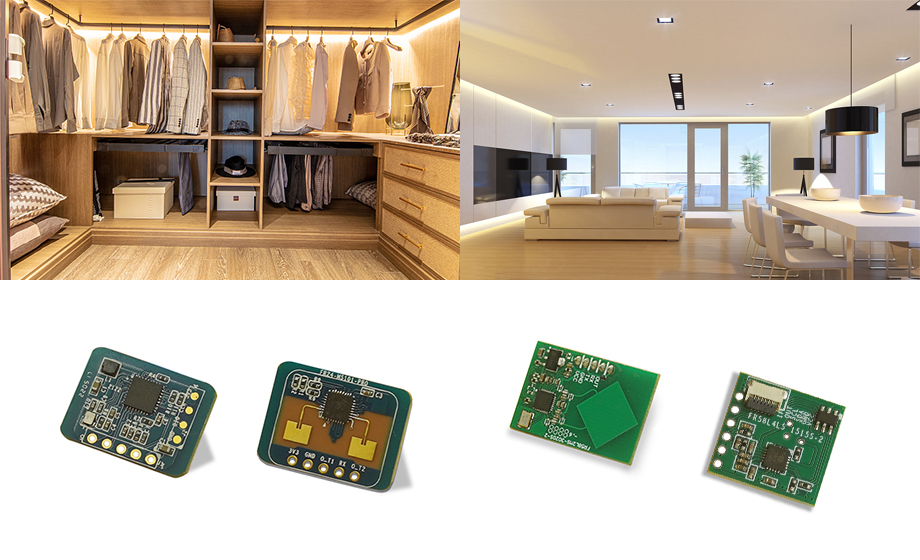How does 24G millimeter wave radar of human body sensing radar module detect life features? The advantage of short wavelength is high accuracy. Millimeter wave radar of 24 or 60GHz (corresponding wavelength in the range of 4mm) can detect motion as short as less than 1mm. The Body Sensing radar module 24G millimeter wave radar sends linear frequency modulated pulses to the patient's chest area. The reflected signal is phase regulated due to the movement of the chest. Conditioning covers all the weights of exercise, including those caused by heartbeat and breathing. The radar sends multiple linearly modulated pulses at predetermined time intervals. Each pulse is separated by a fast Fourier transform (FFT), and a range file corresponding to the position of the person's chest is selected. Each LFM pulse records the phase of the signal in the selected range file. To calculate the phase change and get the velocity. The speed gained still includes all the moving weight. By performing Doppler FFT, various weights can be analyzed.

Challenges in monitoring vital signs with millimeter wave radar
Human sensing Radar module 24G millimeter wave radar technology for vital signs monitoring is still developing. One of the main challenges is the difference in reflected signals between different people. Reflexes depend on skin type, tissue, and its composition. Human bodies also differ in water content and chemical composition. The industry's ongoing research into changes in reflected signals promises more accurate measurements with radar.
The main applications of the body sensing radar module 24G millimeter wave radar are concentrated in the defense, automotive and industrial fields. However, its new advances in the healthcare industry are also significant. Higher accuracy, high-speed signal processing capabilities, enhanced range detection and the integration of radar into small chipsets can greatly facilitate the development of healthcare applications such as patient activity monitoring, vital signs monitoring and so on. In addition, the body sensing radar module 24G millimeter wave radar can also be used to measure sleepiness, stress levels and people's mood, which has important implications for the development of driver monitoring systems in healthcare and automotive applications.



